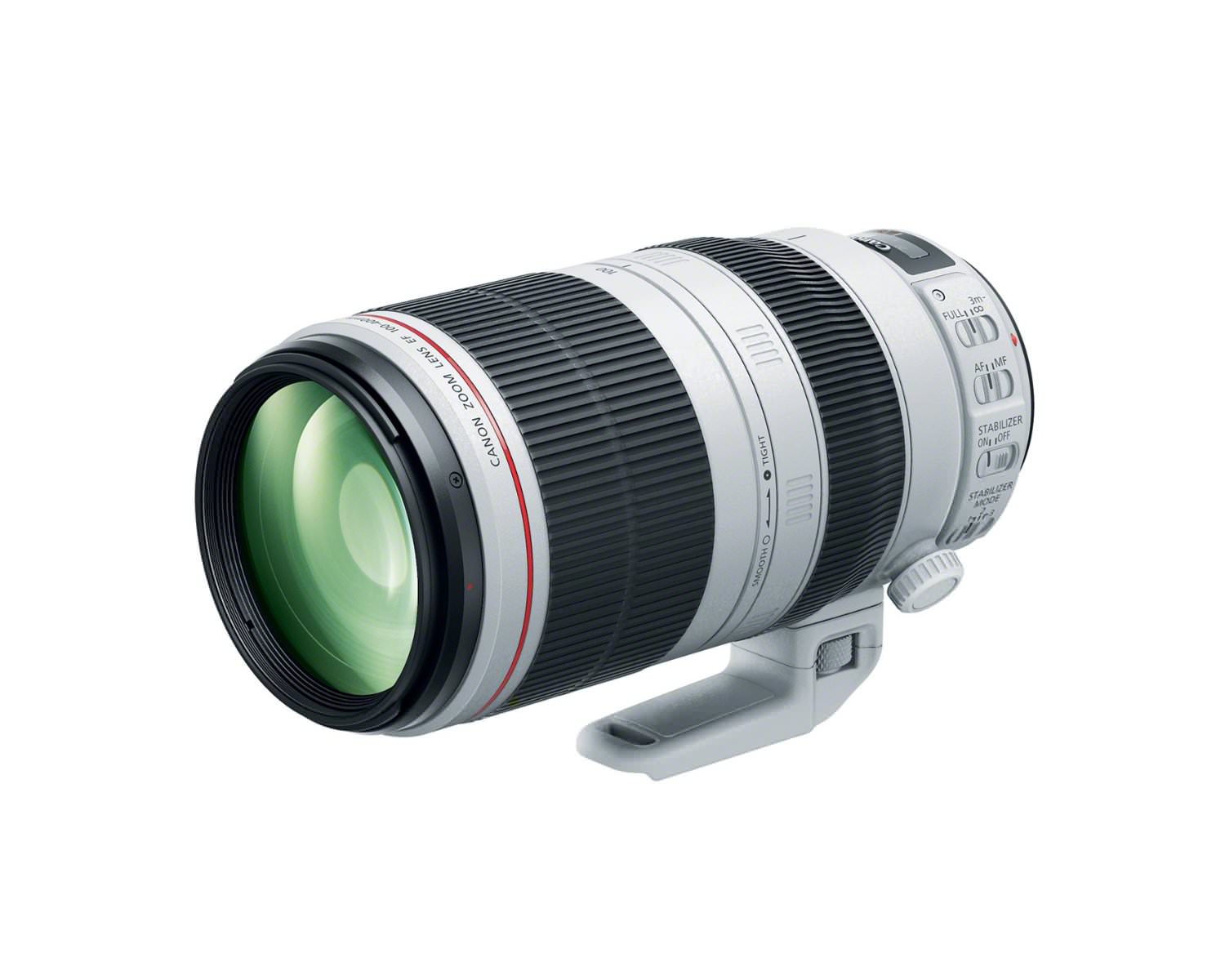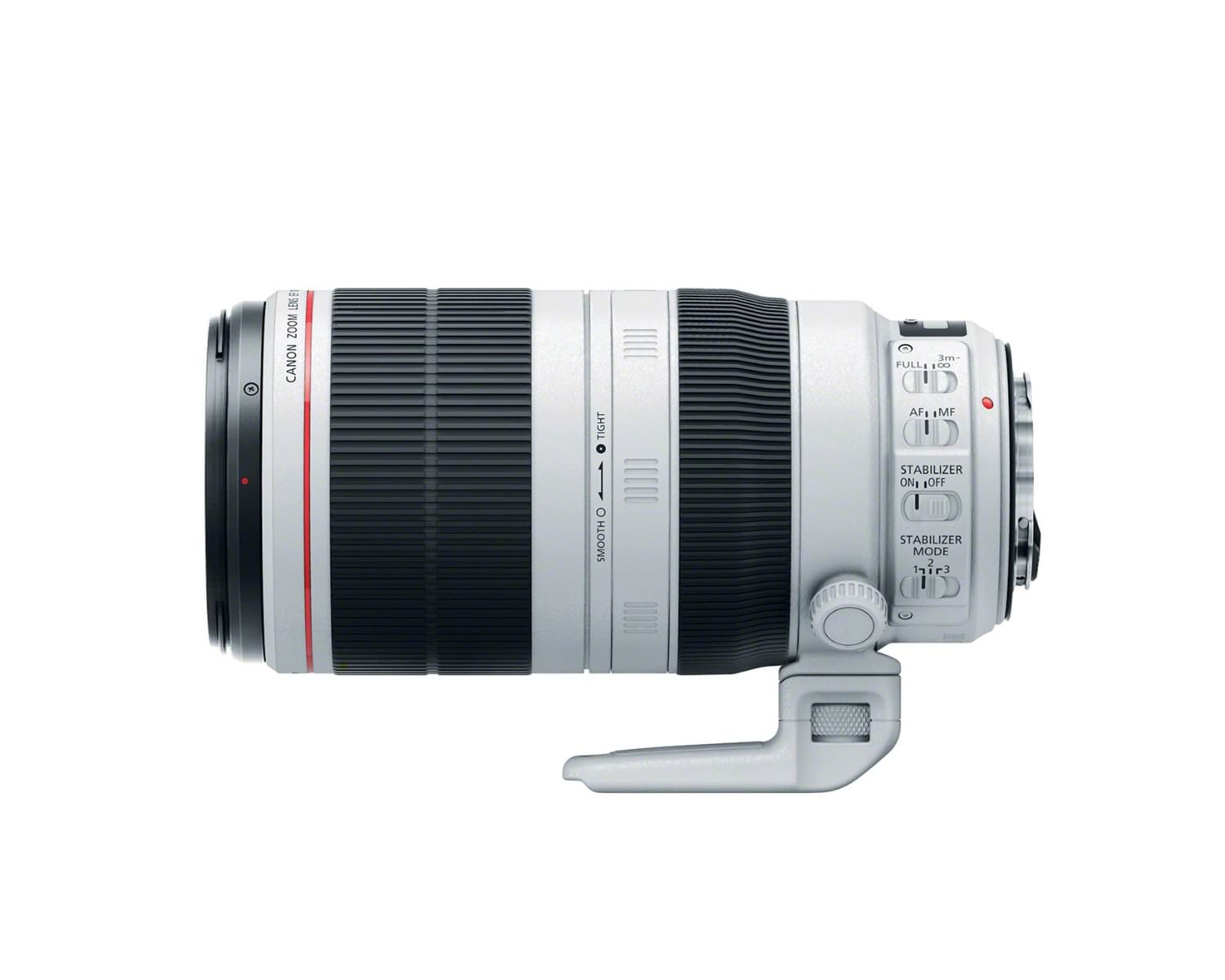This is a lens that has been anticipated for over ten years. The first Canon 100-400mm f/4.5-5.6 was introduced about sixteen years ago and it was a brilliant piece of lens for its time, and also one of the first to feature an optical stabilization unit. It's hard to tell why it took Canon this long to put out the successor, especially with all the competition taking an important part of the market segment. One can only assume they took their time to make a better lens.
The impressive focal range is one of the most important reasons for looking at a lens like this. The range is a dream for any photographer who loves to keep the distance or shoot subjects that are out of reach. This type of lens is not a landscape photographer's tool, but it's something wildlife and sports shooters are aching for.
So at least in this regard, this lens will satisfy most photographers who use telephoto lenses. While the zoom range is identical to the specifications when using a full frame camera, if you mount this lens on a crop camera you get a 160-640mm lens, which is nothing short of impressive, especially when you consider its physical size. (View full specs and photos of the Canon 100-400mm lens here)
(View full specs and photos of the Canon 100-400mm lens here)
Getting deeper into things, you would expect it to be very well built, since it's an "L" piece, and you would also think it has significant design improvements over the previous model. And you'd be right. This is a very well engineered lens, both inside and outside, and you only need to pick it up to feel the quality and reliability. With the collar foot mounted, it weighs a total of 1,616 grams, which is very acceptable for a 400mm optical system. The original 100-400 had a push-pull system that has now been replaced with a standard, very smooth zoom ring. Since it is a lens created for heavy outdoor use, it is thoroughly weather sealed. While it isn't fully water and dustproof, it can be used in harsh conditions.
Focusing and zooming are very smooth as I've mentioned earlier, and this is just one major step forward from the original 100-400.
But the improvements that concern most photographers who have been waiting for this lens are related to image quality and autofocus speed. Let's start with the later. Keep in mind, autofocus speed depends on the camera body as well. But if you use it with something like a 5DMK III or a 7D MK II, this lens focuses almost instantly at all focal lengths. This is by all means a very responsive piece of equipment that can handle fast moving subjects accurately and effortlessly. It has been majorly upgraded from the original model, and one of the first indications of this is the minimum focusing distance, which has been greatly reduced. It now focuses at slightly over half the distance of the old model. For a non-macro lens, it allows you to get very close.
In terms of image quality, a 16 year gap should make a difference. And it does. Images shot with this lens are tack sharp at all focal lengths, even with a 1.4x extender mounted. The lens has an Air Sphere Coating which Canon have developed to reduce flare and reflections. The coating consists of a film made from nanoparticles that is positioned above the multi-coating layers. There is also a Fluorite element in the optical design that allows the lens to achieve amazing sharpness and detail.
Since this is a lens that can be easily used handheld, the importance of stabilization is crucial. As I've mentioned before, the first lens was equipped with one of the earliest systems, one that was rated at 2 stops of assistance. This model has 3 stabilizing modes, another anticipated major improvement.  Mode 1 is ideal for static objects. Mode 2 is for panning and with the help of a single axis stabilization, it's the best option for tracking linearly moving objects. The third mode was first introduced on the 300 and 400mm f2.8L II lenses. Photographers who have previously used them will find this stabilizing mode very familiar. It kicks in when you half press the shutter release and it will activate only after it detects panning and motion. Overall, the IS performs very well in real life and it is of great help in some situations, especially when shooting in lower light or indoors. Like all stabilizing systems on the market, it won't replace a tripod or a monopod. If you want the lens to be absolutely steady, simply mount it on a tripod. If you can't do that, we recommend you keep the IS setting on because it will make a significant difference when shooting handheld.
Mode 1 is ideal for static objects. Mode 2 is for panning and with the help of a single axis stabilization, it's the best option for tracking linearly moving objects. The third mode was first introduced on the 300 and 400mm f2.8L II lenses. Photographers who have previously used them will find this stabilizing mode very familiar. It kicks in when you half press the shutter release and it will activate only after it detects panning and motion. Overall, the IS performs very well in real life and it is of great help in some situations, especially when shooting in lower light or indoors. Like all stabilizing systems on the market, it won't replace a tripod or a monopod. If you want the lens to be absolutely steady, simply mount it on a tripod. If you can't do that, we recommend you keep the IS setting on because it will make a significant difference when shooting handheld.
So after all this info, two important questions still need to be answered. Who is this lens for?
To keep it short, any pro or amateur photographer who needs a long focal length, but doesn't want the large size and weight of a fixed lens. While it may not be the cheapest lens on the market, it is still an attractive option for hobbyists too. Parents who love to photograph their children playing sports will fall in love with it instantly. The second, and most important question is should you buy it? There is a significant price difference between this lens and the original model, and it could be a way for Canon to protect the original investment and keep photographers who own it from feeling bad. While again, this is not a cheap lens, it is without doubt one I highly recommend for anyone who loves to shoot using this kind of focal length. It is still a lot cheaper than a 400 f2.8L II, and the results are very close.
Would I buy it if I had the first 100-400? Probably not. Would I get it if I didn't? I'm probably going to place my order after I finish writing this.
Check out more specs on the 100-400mm f/4.5-5.L IS USM II here.
This blog post about "Canon 100-400mm f/4.5-5.6L IS II USM lens" was first published on our website here https://www.photographytalk.com/photography-articles/5141-why-the-canon-100-400mm-f-4-5-5-6l-is-ii-usm-is-a-must-have